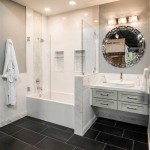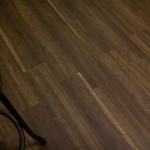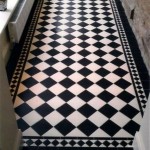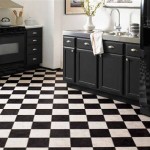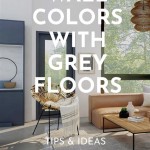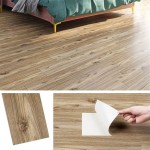Natural Acacia Engineered Hardwood Flooring: A Comprehensive Overview
Natural acacia engineered hardwood flooring presents a compelling option for homeowners and builders seeking a balance between aesthetic appeal, durability, and sustainability. This flooring material leverages the inherent beauty and resilience of acacia wood while incorporating the structural advantages of engineered construction. Understanding the characteristics, benefits, considerations, and installation aspects of natural acacia engineered hardwood flooring is crucial for making an informed decision about its suitability for specific applications.
Acacia, a genus encompassing a wide variety of trees and shrubs, is known for its distinct grain patterns, rich color variations, and inherent hardness. These properties make it a desirable choice for flooring. However, solid acacia flooring can be susceptible to the effects of moisture and humidity, leading to potential warping, cupping, or gapping. Engineered hardwood construction mitigates these risks by combining a thin layer of acacia wood veneer with a core of multiple layers of plywood or high-density fiberboard (HDF), creating a more stable and dimensionally consistent product.
Key Point 1: The Composition and Construction of Acacia Engineered Hardwood
The fundamental difference between solid acacia flooring and engineered acacia flooring lies in their construction. Solid acacia flooring consists of a single piece of acacia wood, milled and shaped to create planks. Engineered acacia flooring, on the other hand, comprises multiple layers bonded together. The top layer, known as the wear layer, is a veneer of genuine acacia wood, offering the visual characteristics desired in a hardwood floor. This veneer is typically several millimeters thick, determining the floor's lifespan and its ability to be refinished if necessary.
The core of engineered acacia flooring is typically constructed from multiple layers of plywood or HDF. Plywood cores are constructed from thin sheets of wood veneer, glued together with the grain running in alternating directions. This cross-layered construction provides exceptional stability and resistance to warping. HDF cores are made from compressed wood fibers, offering similar stability and density. The core material plays a crucial role in mitigating the effects of moisture and temperature fluctuations, making engineered acacia flooring more suitable for environments where solid hardwood might be problematic.
The multi-layered construction of engineered flooring distributes stress more evenly, reducing the likelihood of movement and distortion. This is particularly important in climates with significant seasonal changes in humidity levels. The bottom layer, often referred to as the backing layer, provides additional stability and protection against moisture from the subfloor. The entire assembly is bonded together using adhesives, creating a durable and dimensionally stable flooring product.
The thickness of the acacia veneer wear layer is a significant factor in determining the longevity and potential for refinishing. Thicker wear layers can withstand more sanding and refinishing, extending the floor's lifespan. However, even with a thinner wear layer, engineered acacia flooring can last for many years with proper care and maintenance. The type of finish applied to the acacia veneer also contributes to its durability and resistance to scratches, stains, and wear.
Key Point 2: Advantages of Natural Acacia Engineered Hardwood Flooring
Natural acacia engineered hardwood flooring offers several advantages over solid acacia flooring and other flooring materials, making it a popular choice for various applications. These advantages stem from the combination of acacia's inherent properties and the benefits of engineered construction.
Dimensional Stability: As previously mentioned, the engineered construction provides superior dimensional stability compared to solid acacia flooring. The cross-layered core minimizes the effects of moisture and temperature fluctuations, reducing the risk of warping, cupping, or gapping. This makes engineered acacia flooring suitable for installation in areas where solid hardwood might not be recommended, such as basements, kitchens, and bathrooms.
Cost-Effectiveness: Engineered acacia flooring is often more cost-effective than solid acacia flooring. This is because it uses less acacia wood in its construction, making it a more sustainable and affordable option. The lower cost can make acacia's beauty more accessible to a wider range of budgets.
Ease of Installation: Many engineered acacia flooring products are designed with click-lock or tongue-and-groove systems, simplifying the installation process. These systems allow for floating installations, where the floor is not directly attached to the subfloor, further reducing installation time and costs. This ease of installation makes it a popular choice for both professional installers and DIY enthusiasts.
Versatility: Engineered acacia flooring can be installed over various subfloors, including concrete, plywood, and existing flooring. This versatility makes it suitable for both new construction and renovation projects. The ability to install over different subfloors provides flexibility in design and eliminates the need for extensive subfloor preparation in some cases.
Environmental Considerations: Engineered acacia flooring can be a more environmentally friendly option than solid acacia flooring. By using less acacia wood and utilizing sustainable core materials, it reduces the demand for virgin timber and promotes responsible forestry practices. Opting for engineered products certified by organizations like the Forest Stewardship Council (FSC) ensures that the wood is sourced from sustainably managed forests.
Aesthetic Appeal: Acacia wood is prized for its natural beauty, featuring rich color variations, distinctive grain patterns, and a warm, inviting appearance. Engineered acacia flooring captures these aesthetic qualities, offering a visually appealing and durable flooring option. The availability of different finishing options allows for customization to match various design styles.
Key Point 3: Considerations and Maintenance for Acacia Engineered Hardwood
While natural acacia engineered hardwood flooring offers numerous benefits, it's crucial to consider certain factors before making a purchase and to implement proper maintenance practices to ensure its longevity and beauty.
Wear Layer Thickness: As mentioned earlier, the thickness of the acacia veneer wear layer is a critical factor. A thicker wear layer provides more durability and allows for more refinishing opportunities. Consider the expected level of foot traffic and wear when choosing a product with an appropriate wear layer thickness.
Finish Type: The finish applied to the acacia veneer significantly impacts its durability and appearance. Common finish types include polyurethane, aluminum oxide, and oil-based finishes. Polyurethane finishes offer good scratch and stain resistance, while aluminum oxide finishes are known for their exceptional durability. Oil-based finishes provide a natural look and feel but may require more frequent maintenance.
Moisture Control: While engineered acacia flooring is more resistant to moisture than solid acacia, excessive moisture can still cause damage. Proper moisture control measures, such as using a vapor barrier during installation and promptly cleaning up spills, are essential. Avoid excessive wet mopping and consider using area rugs in high-moisture areas like kitchens and bathrooms.
Acclimation: Before installation, it's crucial to acclimate the engineered acacia flooring to the room's environment for several days. This allows the wood to adjust to the temperature and humidity levels, minimizing the risk of expansion or contraction after installation. Follow the manufacturer's recommendations for acclimation procedures.
Regular Cleaning: Regular cleaning is essential to maintain the beauty and longevity of engineered acacia flooring. Sweep or vacuum the floor regularly to remove dirt and debris. Use a damp mop with a neutral pH cleaner specifically designed for hardwood floors. Avoid using harsh chemicals or abrasive cleaners, as these can damage the finish.
Refinishing: Depending on the wear layer thickness, engineered acacia flooring can be refinished to restore its original appearance. Refinishing involves sanding the existing finish and applying a new coat. This process can remove scratches, stains, and other imperfections, extending the floor's lifespan. Consult with a professional flooring contractor to determine if refinishing is appropriate and to ensure the process is done correctly.
Subfloor Preparation: Proper subfloor preparation is crucial for a successful installation. Ensure the subfloor is clean, level, and dry before installing the engineered acacia flooring. Uneven subfloors can cause the flooring to flex and creak, while excessive moisture can lead to warping or mold growth. Addressing any subfloor issues before installation will ensure a long-lasting and aesthetically pleasing result.
Professional Installation: While some engineered acacia flooring products are designed for DIY installation, professional installation is often recommended, especially for complex layouts or challenging subfloor conditions. Professional installers have the expertise and tools to ensure a proper and long-lasting installation, minimizing the risk of problems down the line.
In conclusion, natural acacia engineered hardwood flooring presents a viable and attractive flooring solution for diverse applications. Its combination of natural beauty, dimensional stability, cost-effectiveness, and ease of installation makes it a compelling choice for homeowners and builders seeking a durable and aesthetically pleasing flooring option. Careful consideration of wear layer thickness, finish type, and maintenance practices is crucial for ensuring the longevity and beauty of acacia engineered hardwood flooring.

Mayflower 3 8 In Natural Acacia Distressed Engineered Hardwood Flooring 5 Wide Ll

Homelegend Natural Acacia 3 8 In T X 5 W Hand Scraped Engineered Hardwood Flooring 26 Sqft Case Hl196h The Home

Shop Allen Roth Natural Acacia Handscraped Engineered Hardwood And Accessories Flooring Collection At Lowes Com

Hand Scraped Natural Acacia Flooring Hardwood Bargains Www Hardwoodbargains Com 10n5 Html

Allen Roth Ar 5in Lk Natrl Acacia 32 29sqft At Lowes Com

Acacia Prefinished Engineered Hardwood Flooring Floor

4 3 X 1 2 Acacia Hand Scraped Prefinished Engineered Hurst Hardwoods

Villa Acacia Natural Handscraped Tas Flooring

Acacia Natural Exotics Collection Engineered Hardwood Flooring By The Garrison Factory

Bellawood Acacia Engineered Wood Flooring Hardwood Choosing Floors

